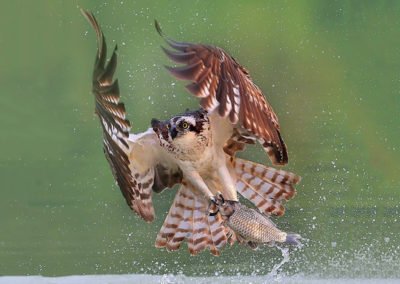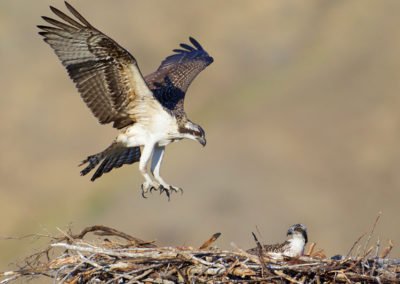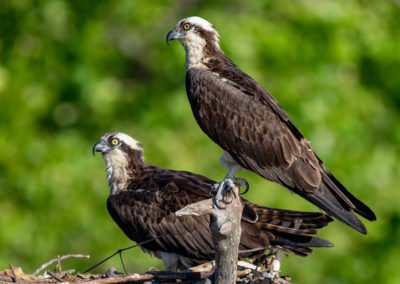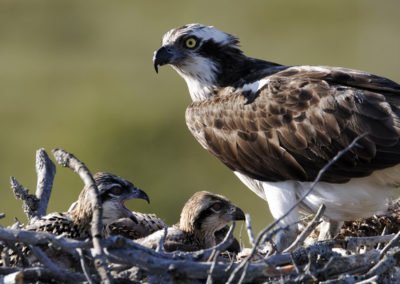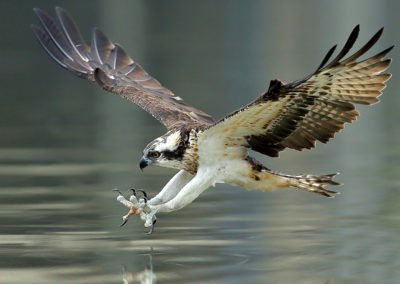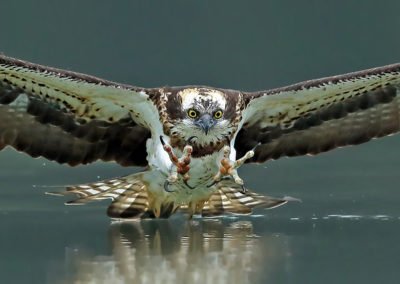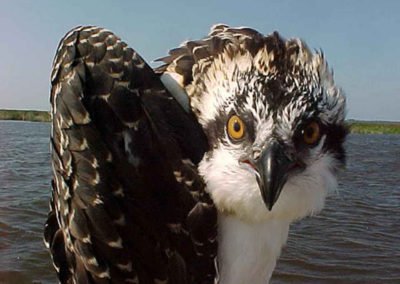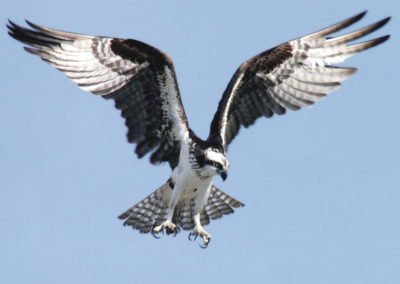For More Information
Bierregaard, RO, Poole, AF, Martell, MS, Pyle, P., & Patten, MA. 2016. Osprey (Pandion haliaetus), version 2.0. In Birds of North America (Ed. by PG Rodewald). Cornell Lab of Ornithology.
Jewett, SA, Taylor, WP, Shaw WT, & Aldrich, JW. 1953. Birds of Washington State. University of Washington Press.
Osprey. Hawkwatch International.
Peterjohn, B. 1991. Summaries of Breeding Bird Survey data for Washington, 1966-1991. In: Smith, MR, Mattocks, PW, & Cassidy, KM. 1997. Breeding Birds of Washington State. Seattle Audubon Society.
Poole, AF. 1989. Ospreys: A Natural and Unnatural History. Cambridge University Press.
Wahl, TR, Tweit, B, & Mlodinow, S. 2005. eds. Birds of Washington: Status and Distribution. Oregon State University Press.
Osprey
Pandion haliaetus
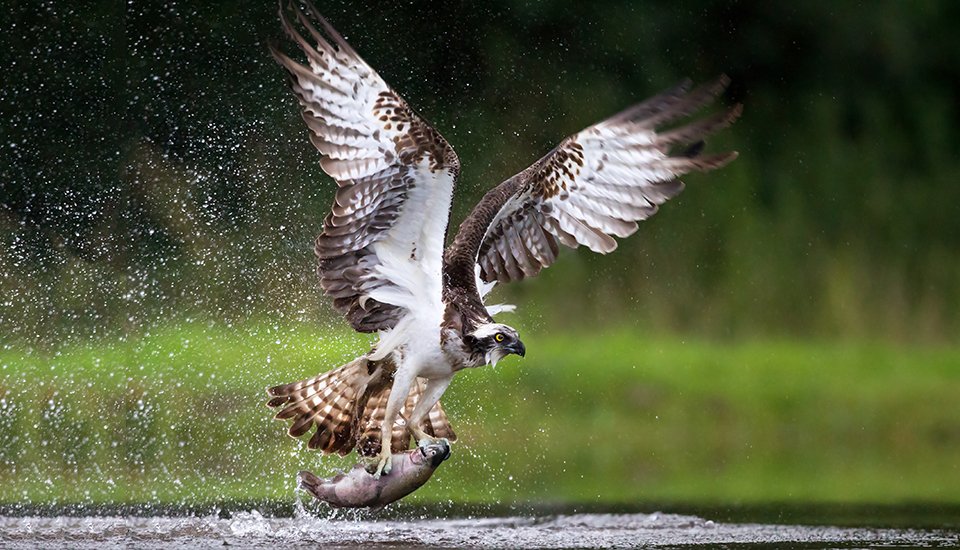
Osprey fishing.
Mark Medcalf, Shutterstock.
Ospreys (“fish hawks”) feed almost entirely on live fish caught by plunging feet-first into water, often from considerable heights. Jewett et al. (1953) wrote, “…here in the Northwest this beautiful bird is killed at every opportunity in the senseless belief that it is a major factor in the destruction of game fish… The Osprey does subsist on fish which it catches in our lakes and streams, but… the great majority of fish caught are suckers, carp, and so-called trash fish little used for human consumption.”
In the mid-20th century, Osprey populations were severely hit by pollutants (e.g., mercury), pesticides (e.g., DDT), and acidification of waterways. Landmark studies helped establish the link between these pollutants and the Osprey population decline. Cleaning up our act has helped Osprey populations rebound, maybe even beyond historical levels.
Urban History
Most Ospreys spend the Northwest winter in Central and South America. Columbia River Ospreys outfitted with transmitters were found to migrate to northern Mexico and south to El Salvador.
Few Ospreys are seen in Seattle between October and April (although some winter birds are reported each year). Starting in late March, Ospreys return to the region and stake out territories, usually near bodies of water.
Washington’s Osprey population is doing fine. According to a 1991 survey, Osprey numbers increased 10-12% a year between 1966 and 1991—roughly doubling every seven years. No official records are known for the growth of Seattle’s Osprey population. A 1981 nest in Seattle was mentioned in Birds of Washington. An informal tally indicates about 20 breeding pairs in the city in 2018.
The nest is “a huge aggregation of sticks and trash normally placed near the water’s edge on the cliff, on rocks projecting in mid-stream, or else high on a neighboring tree” (Jewett, 1953). Most or all Osprey nests in the Seattle area are near water. Historically nests were probably in the tops of snags; today they are mostly on towers.
Some elevated nest platforms have been placed to discourage urban Ospreys from undesirable locations (cranes, high-voltage towers, light stands at sports fields). Citizens have spearheaded the placement of other nest platforms on public property, such as at Ballard Locks (2012) and Union Bay Natural Area (2015).
- A clutch typically consists of three eggs, about 2.3” x 1.7”. Eggs are creamy-white to pinkish with dark red spots.
- Eggs hatch in about 37 days. Both adults incubate, mostly the female.
- For about 2 weeks post-hatching, young are brooded almost constantly, mostly by the female.
- Around 40 days, young no longer need adults to tear up prey for them and instead will snatch prey as it is delivered to the nest.
- Fledging occurs around 55-62 days. Young initially stay near the nest, then start following adults on longer flights.
- Young may attempt to catch their own food as early as 5 days post-fledging, but they depend on at least some feeding by the parents (mostly the male) for up to 5 weeks. Hunting skills are innate (e.g., young taken into rehab and later released learn to fish even without adults around to teach them.
- Many young
Osprey make their first migration south on their own, returning north to the breeding grounds only in their third year. They often don’t breed until 4-5 years of age.
(1) Wang LiQiang, Shutterstock. (2) Tom Reichner, Shutterstock. (3) My Generations Art, Shutterstock. (4) Enri, Shutterstock. (5) Wang LiQiang, Shutterstock. (6) Wang LiQiang, Shutterstock. (7) USFWS, Pixnio. (8) Wikimedia Commons.
